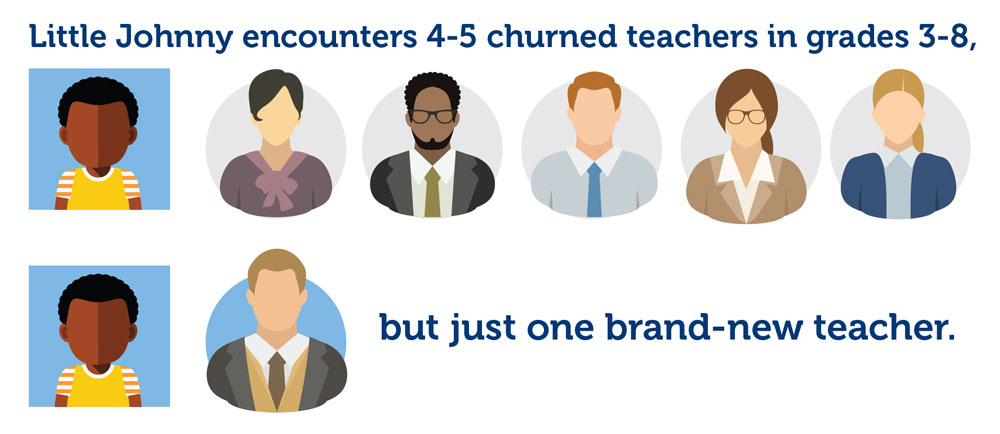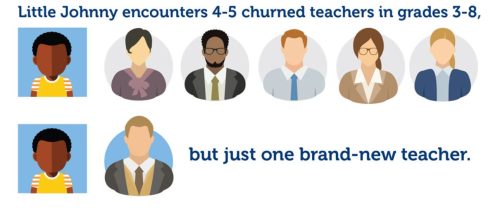If there’s one thing that research has shown us time and again, it’s that being a brand new teacher is hard—and being one of their first students is not all that ideal either. But what happens when an experienced teacher switches to a new grade level or subject? Does she start all over again? This shift, called “churn,” might not sound like a big deal, but as with any change in professional responsibilities, it does come with a learning curve and some predictable consequences.
In a new study looking at data from New York City over a 35-year period, Allison Attebury (UC Boulder), Susanna Loeb (Stanford), and Jim Wyckoff (UVA) find that a student taught by a churned teacher faces a moderate disadvantage. But because 25 percent of the city’s teachers churn to a new grade, subject, or both within their school every year, that moderate difference can really add up to a significant learning loss over several years.
Little Johnny encounters 4-5 churned teachers in grades 3-8, but just one brand new teacher.

As we explored in last month’s TQB, it seems plausible that there could be an upside to shifting teachers to new grades within a school. Maybe Mrs. Jones does better with older students than younger, and so a switch in this instance could help her find a better teaching fit. But unfortunately, this study did not support that hypothesis as a guiding principle. Instead there’s no clear evidence that churned teachers end up performing much better in new positions.
Nevertheless, if we’re not speaking about within-school churn but transferring schools, it may be another story. Susanna Loeb, one of the study’s co-authors, recently published another study with Min Sun (University of Washington) and Jason Grissom (Vanderbilt) that does identify some benefit to moving teachers around. Experienced and relatively effective math teachers who transfer from one school to another create a “spillover” effect—meaning math scores go up for the students taught by the other teachers in that grade level. This finding suggests that there are some ways in which administrators can rethink teaching assignments to improve student outcomes—as long as these shifts are made sparingly and strategically.

